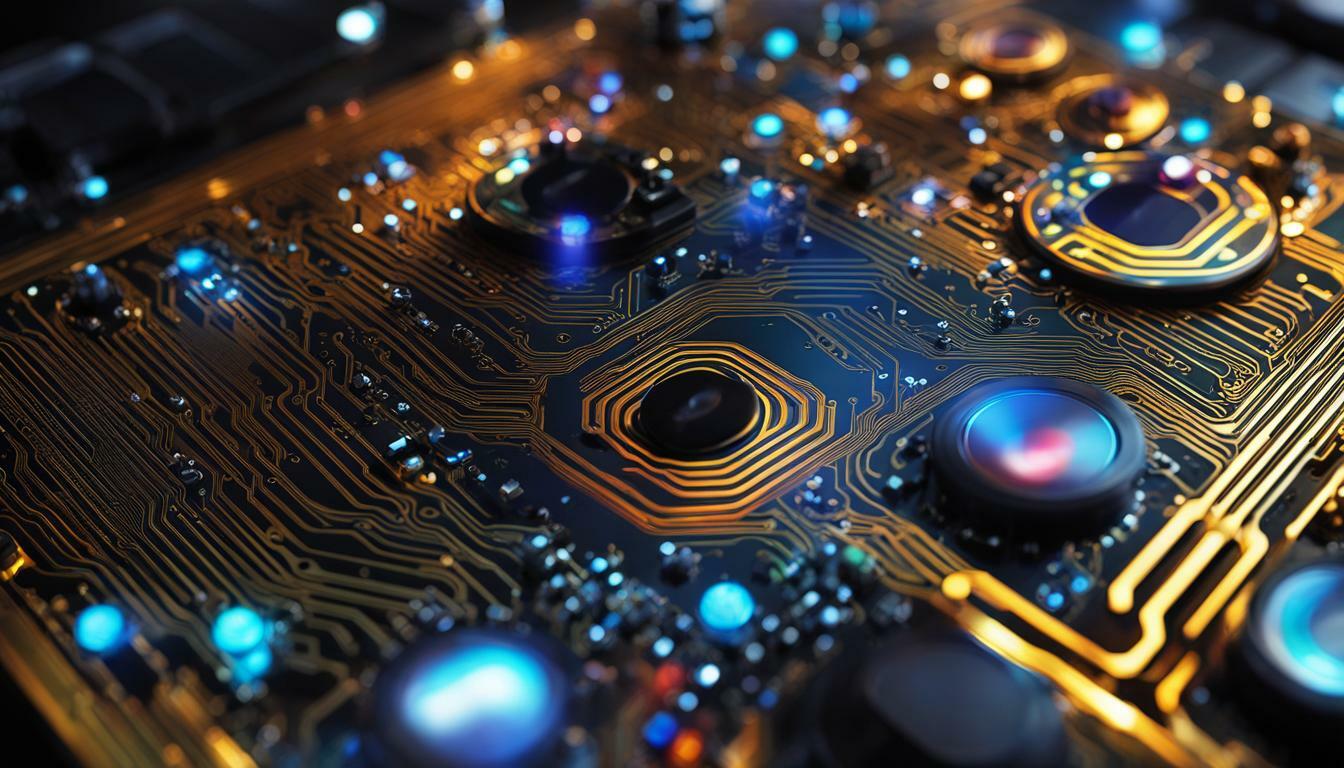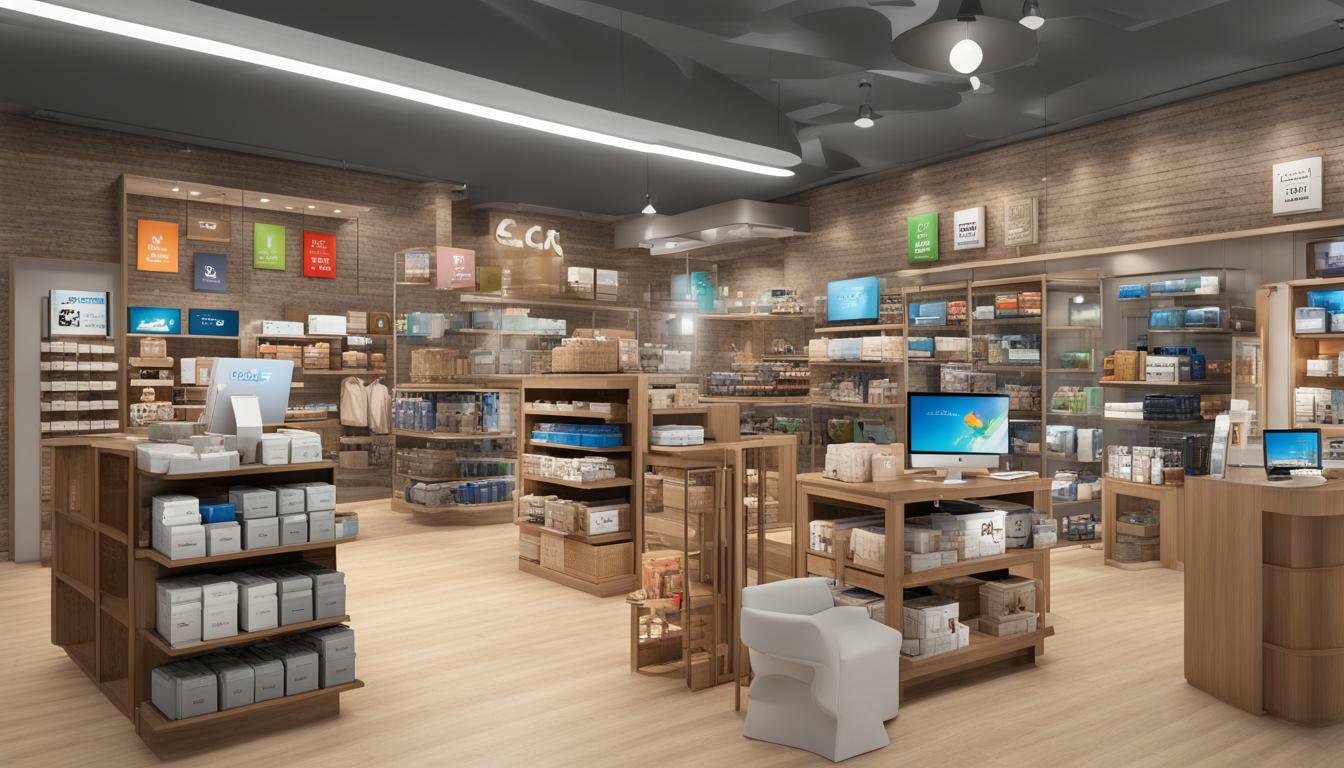Are you in the market for a new computer or looking to optimize your hardware platform for better performance? Understanding the components and architecture of a hardware platform is crucial for achieving peak performance. From platform compatibility to hardware engineering, there are several factors to consider when choosing and optimizing your hardware platform. In this article, we’ll explore these key considerations in-depth, giving you the knowledge you need to make informed decisions and maximize your hardware’s potential.
Key Takeaways:
- Understanding the components and architecture of a hardware platform is crucial for optimal performance.
- Platform compatibility with software applications and operating systems is an important factor to consider.
- The development process and optimization of a hardware platform greatly affects its efficiency and speed.
- The processing power of the CPU, amount and speed of memory (RAM), and type and capacity of storage devices are all key performance factors.
- Choosing a hardware platform based on your specific requirements and goals is crucial for optimal performance.
What is a Hardware Platform?
So, you’re diving headfirst into the world of computer hardware and trying to make sense of the jargon. Well, let’s start with the basics. A hardware platform is simply the physical components that make up a computer or computing system. Think of it as the skeleton that supports the software and allows your computer to function.
Hardware platforms are made up of various components, each serving a specific purpose. The motherboard is like the nervous system, connecting everything together and managing data flow. The processor (CPU) is like the brain, handling the computations and instructions. Memory (RAM) is like the short-term memory, storing data that the processor needs to access quickly. And storage devices, such as hard drives and solid-state drives, are like the long-term memory, holding onto data even when the power is turned off.
Understanding the different hardware components is crucial to understanding how they can impact the overall performance of a hardware platform. So, brush up on your computer hardware knowledge and get ready to optimize your platform for top-notch performance.
Platform Architecture and Compatibility
Now that you’re familiar with what a hardware platform is, it’s important to understand that not all hardware platforms are created equal. The architecture of a hardware platform is a critical factor in determining its compatibility with software and overall performance.
Platform architecture refers to the design and configuration of a hardware platform, which can greatly affect its efficiency. Some architectures are better suited for certain types of software, while others may be more versatile and adaptable.
When considering a hardware platform, it’s crucial to ensure that its architecture is compatible with the software applications or operating systems you plan to use. If the architecture is not optimized for the software, it may result in slower performance, crashes, or even incompatibility issues altogether.
Furthermore, it’s important to note that not all hardware platforms are compatible with each other. The platform compatibility of a hardware platform is determined by its ability to work with other hardware and software components. Thus, it’s important to evaluate the compatibility of your hardware platform with other components such as a printer, scanner, or other peripherals.
Consider the Compatibility of Your Platform
When choosing a hardware platform, make sure that its architecture is optimized for the software you plan to use. You may also want to choose a platform that is compatible with other hardware components that you may be using.
You don’t want to be stuck with a hardware platform that slows down your software or isn’t compatible with other components. Do your due diligence and choose wisely!
Overall, taking into account the platform architecture and compatibility will help ensure that your hardware platform functions optimally and meets your needs.
Hardware Development and Optimization
So, you’re ready to maximize the performance of your hardware platform? Great! Let’s dive into the world of hardware development and optimization.
First things first, the choice of components is key. Don’t just settle for any old parts – invest in quality manufacturing and top-of-the-line firmware optimization. It may cost a little more upfront, but trust us, it’ll pay off in the long run.
Once you have your components in place, it’s time to focus on optimizing your platform. Take advantage of software tools and explore opportunities for customization to fine-tune your hardware platform. You can even consider overclocking to push your CPU and memory to the limit. Just be sure to do your research and proceed with caution – we don’t want any fried hardware on our hands.
Now, let’s talk about cooling. Inefficient cooling systems can seriously hinder your hardware platform’s performance. Make sure you have adequate cooling solutions in place, such as fans or liquid cooling, to keep your components running at optimal temperatures.
Don’t forget about power supply units, either. A poor-quality PSU can lead to unstable power delivery, which can cause crashes and other performance issues. Always opt for a high-quality PSU and ensure it has sufficient wattage to power your hardware platform.
Lastly, keep an eye on data transfer interfaces, expansion slots, and network connectivity. These factors may not be the first things that come to mind when thinking about hardware development, but they can greatly impact performance. Make sure you have fast and reliable interfaces for transferring data, enough expansion slots to accommodate future upgrades, and steady network connectivity to prevent any interruptions in performance.
Incorporating these hardware development and optimization tips into your hardware platform can make all the difference in maximizing performance and ultimately achieving your goals. Happy optimizing!
Performance Factors for Hardware Platforms
When it comes to hardware platforms, there are several key factors that can greatly influence their performance. Taking these factors into account will help you determine the optimal hardware platform for your needs.
Processing Power of the CPU
The CPU is essentially the brain of your hardware platform. The speed and processing power of the CPU will greatly impact the overall performance of the platform. If you’re looking for a high-performance platform, you’ll want to invest in a CPU with a high clock speed and multiple cores.
Memory (RAM)
The amount and speed of memory (RAM) is another crucial factor in determining the performance of a hardware platform. More RAM means the platform can handle more data and perform more tasks simultaneously. Faster RAM allows the platform to access data more quickly, which can boost overall performance.
Storage Devices
The type and capacity of storage devices can also impact the performance of a hardware platform. Solid state drives (SSDs) tend to offer faster read/write speeds than traditional hard disk drives (HDDs), which can make a significant difference in overall performance. Additionally, it’s important to ensure that the storage capacity is sufficient for your needs, as running out of space can slow down the platform.
Cooling Systems
Efficient cooling systems are necessary to prevent the hardware platform from overheating. Overheating can cause performance issues and potentially damage the components of the platform. Investing in a quality cooling system can help ensure optimal performance of your hardware platform.
Power Supply Units
Power supply units (PSUs) are responsible for providing power to the hardware components of the platform. A high-quality PSU can ensure stable and consistent power delivery, which can improve performance and prevent issues such as crashes or data loss.
Data Transfer Interfaces
The speed of data transfer interfaces, such as USB, Ethernet, or Wi-Fi, can greatly impact the performance of a hardware platform. Faster transfer speeds mean data can be processed and transferred more quickly, which can improve overall performance.
Expansion Slots
Expansion slots allow for adding additional hardware components to the platform, such as graphics cards or sound cards. Having available expansion slots can allow for future upgrades and improvements to the platform, which can help ensure optimal performance over time.
Network Connectivity
The reliability and speed of network connectivity can also impact the performance of a hardware platform. Poor or unreliable network connectivity can cause slow data transfer speeds and potential connectivity issues, which can hinder performance.
By taking these factors into account and selecting a hardware platform that meets your specific requirements and goals, you can optimize both current and future performance of your hardware infrastructure.
Selecting the Right Hardware Platform
So, you’ve considered all the factors that can impact the performance of your hardware platform and are ready to make a selection. Congrats, you’re one step closer to optimal performance! But before you whip out that credit card, let’s make sure you’re choosing the right hardware infrastructure for your needs.
First, evaluate the demands of the software applications or tasks you’ll be running. Will you be using high-performance software with demanding requirements? Or are you just browsing the web and writing emails? Make sure your hardware platform can handle the workload you plan to throw at it.
Next, consider the scalability and upgradeability of the platform. Will your hardware infrastructure be able to adapt to your future needs? You don’t want to invest in a platform that will become obsolete in just a few years.
Now, here comes the tricky part – balancing cost and performance. You want the most bang for your buck, right? Of course, you do! But be careful not to skimp on the hardware platform to save a few bucks. Investing in quality hardware infrastructure upfront can save you money in the long run and provide a better overall experience.
In summary, when selecting a hardware platform, consider your specific requirements, scalability, and upgradeability, and always aim for quality hardware infrastructure. With these factors in mind, you’ll be well on your way to optimal hardware performance.

![The 10 Most Accurate Website Traffic Estimators [2025 Update] - Accurate Website Traffic Estimators The 10 Most Accurate Website Traffic Estimators [2025 Update] - Accurate Website Traffic Estimators](https://www.toptut.com/wp-content/uploads/2024/01/The-10-Most-Accurate-Website-Traffic-Estimators-2024-Update.jpg)







